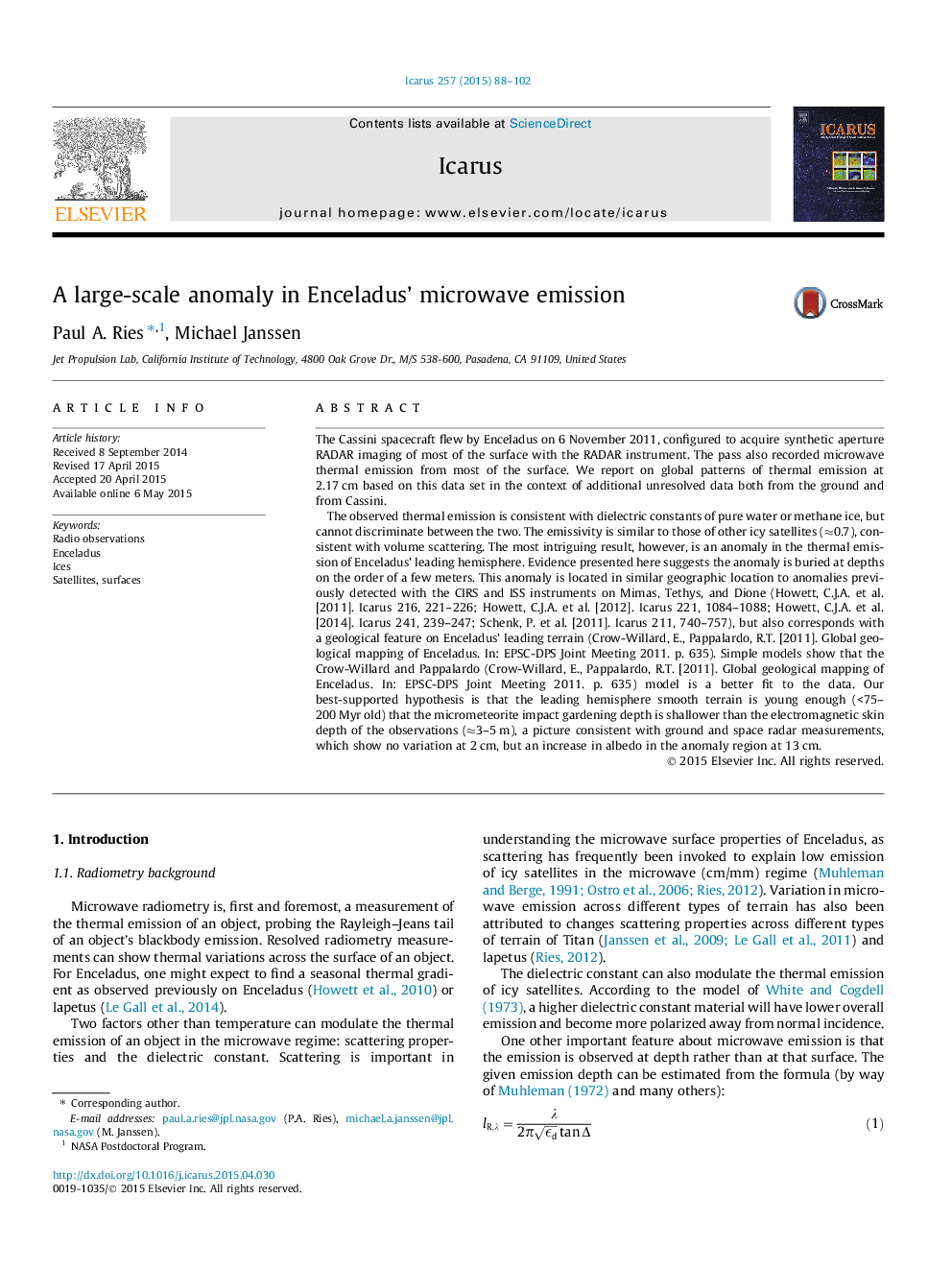| Article ID | Journal | Published Year | Pages | File Type |
|---|---|---|---|---|
| 8136099 | Icarus | 2015 | 15 Pages |
Abstract
The observed thermal emission is consistent with dielectric constants of pure water or methane ice, but cannot discriminate between the two. The emissivity is similar to those of other icy satellites (â0.7), consistent with volume scattering. The most intriguing result, however, is an anomaly in the thermal emission of Enceladus' leading hemisphere. Evidence presented here suggests the anomaly is buried at depths on the order of a few meters. This anomaly is located in similar geographic location to anomalies previously detected with the CIRS and ISS instruments on Mimas, Tethys, and Dione (Howett, C.J.A. et al. [2011]. Icarus 216, 221-226; Howett, C.J.A. et al. [2012]. Icarus 221, 1084-1088; Howett, C.J.A. et al. [2014]. Icarus 241, 239-247; Schenk, P. et al. [2011]. Icarus 211, 740-757), but also corresponds with a geological feature on Enceladus' leading terrain (Crow-Willard, E., Pappalardo, R.T. [2011]. Global geological mapping of Enceladus. In: EPSC-DPS Joint Meeting 2011. p. 635). Simple models show that the Crow-Willard and Pappalardo (Crow-Willard, E., Pappalardo, R.T. [2011]. Global geological mapping of Enceladus. In: EPSC-DPS Joint Meeting 2011. p. 635) model is a better fit to the data. Our best-supported hypothesis is that the leading hemisphere smooth terrain is young enough (<75-200Â Myr old) that the micrometeorite impact gardening depth is shallower than the electromagnetic skin depth of the observations (â3-5Â m), a picture consistent with ground and space radar measurements, which show no variation at 2Â cm, but an increase in albedo in the anomaly region at 13Â cm.
Related Topics
Physical Sciences and Engineering
Earth and Planetary Sciences
Space and Planetary Science
Authors
Paul A. Ries, Michael Janssen,
